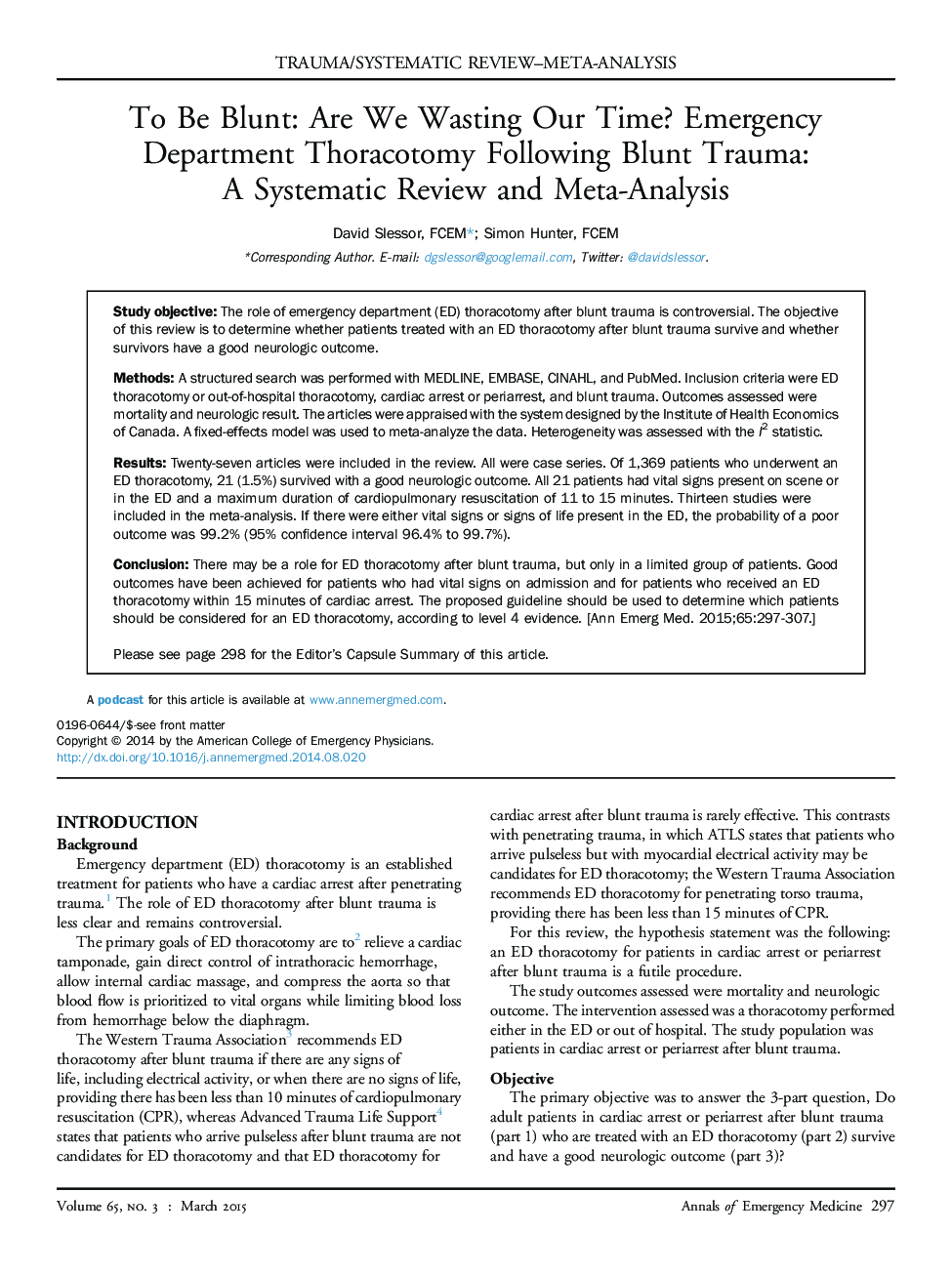| Article ID | Journal | Published Year | Pages | File Type |
|---|---|---|---|---|
| 6081320 | Annals of Emergency Medicine | 2015 | 27 Pages |
Study objectiveThe role of emergency department (ED) thoracotomy after blunt trauma is controversial. The objective of this review is to determine whether patients treated with an ED thoracotomy after blunt trauma survive and whether survivors have a good neurologic outcome.MethodsA structured search was performed with MEDLINE, EMBASE, CINAHL, and PubMed. Inclusion criteria were ED thoracotomy or out-of-hospital thoracotomy, cardiac arrest or periarrest, and blunt trauma. Outcomes assessed were mortality and neurologic result. The articles were appraised with the system designed by the Institute of Health Economics of Canada. A fixed-effects model was used to meta-analyze the data. Heterogeneity was assessed with the I2 statistic.ResultsTwenty-seven articles were included in the review. All were case series. Of 1,369 patients who underwent an ED thoracotomy, 21 (1.5%) survived with a good neurologic outcome. All 21 patients had vital signs present on scene or in the ED and a maximum duration of cardiopulmonary resuscitation of 11 to 15 minutes. Thirteen studies were included in the meta-analysis. If there were either vital signs or signs of life present in the ED, the probability of a poor outcome was 99.2% (95% confidence interval 96.4% to 99.7%).ConclusionThere may be a role for ED thoracotomy after blunt trauma, but only in a limited group of patients. Good outcomes have been achieved for patients who had vital signs on admission and for patients who received an ED thoracotomy within 15 minutes of cardiac arrest. The proposed guideline should be used to determine which patients should be considered for an ED thoracotomy, according to level 4 evidence.
